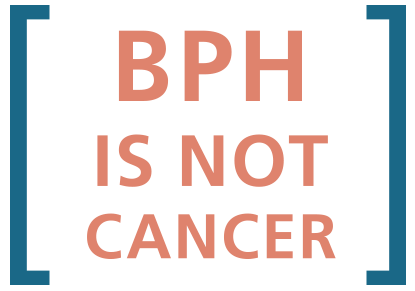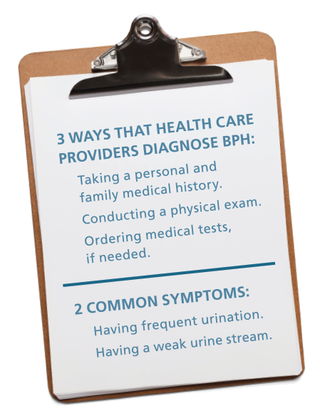| BY THE NUMBERS |
Benign prostatic hyperplasia
Benign prostatic hyperplasia (BPH), or enlarged prostate, is a common condition in older men. It occurs when the cells in the prostate multiply. This causes your prostate gland to get bigger, which squeezes the urethra and limits the flow of urine.

Having BPH does not increase the chance of getting prostate cancer.
BPH is the most common diagnosis for men between the ages of 45 and 74.

Some men with BPH feel the need to urinate every 1 to 2 hours, especially at night.
50%
of US men between the ages of 51 and 60 are affected by BPH.
90%
of US men over the age of 80 are affected by BPH.

Tests for BPH
may include:
A digital rectal exam
Blood tests
Imaging tests
Urine flow study
A cystoscope examination
3
problems BPH can lead to:
Bladder damage, kidney damage and infections.
5
risk factors for BPH:
Lack of exercise, obesity, aging, family history and hormone changes.
4
main options for managing BPH:
Medication, surgery, lifestyle changes and active surveillance.
Active surveillance means that your doctors will proactively monitor your BPH, but will not provide medical treatment right away. This may be a good option if your symptoms aren’t too bothersome.
UrologyHealth.org | FALL 2019 | UROLOGYHEALTH extra